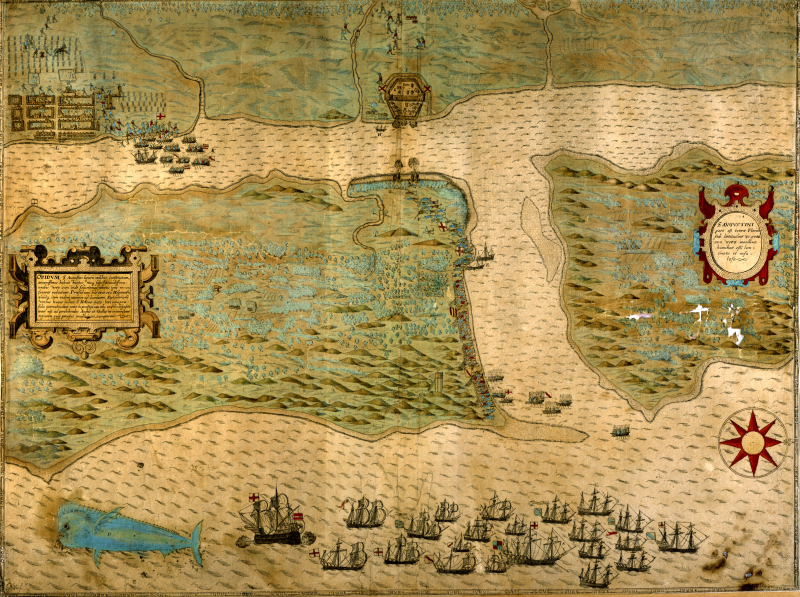
Other resources for ARCapalooza
Need access to ‘locked’ resources?
Please login to view purchased products or purchase this product for ($12 USD).

Student resources to accompany Forging America 1e
Contains one of (mostly) every content type and certain specific simulations/unique resources that we'd want tested for accessibility. (The "mostly" is because certain content types don't make sense for accessibility testing, such as the HTML content type, where accessibility is dependent on the HTML being used.)
Contains one of (mostly) every content type and certain specific simulations/unique resources that we'd want tested for accessibility. (The "mostly" is because certain content types don't make sense for accessibility testing, such as the HTML content type, where accessibility is dependent on the HTML being used.)
Contains one of (mostly) every content type and certain specific simulations/unique resources that we'd want tested for accessibility. (The "mostly" is because certain content types don't make sense for accessibility testing, such as the HTML content type, where accessibility is dependent on the HTML being used.)
Dives into competing products in 15 minutes or less! Experience the competition in the company of your friendly digital team.
Nate test area.
Tommy's testing ground for things
This product includes iFrame Resizer (iframeSizer.min.js ) - v3.6.3 - 2018-10-28 as a custom JS library made available to all product resources.
Please login to view purchased products or purchase this product for ($12 USD).
Unit 1, Track 1, Page 17

Italian artist Baptista Boazio created this hand-colored engraving to accompany A summarie and true discourse of Sir Francis Drake's West Indian Voyage, published in London in 1588-1589. Part of a series of maps, this engraving, created in 1589, shows the English conquest of St. Augustine, Florida by the ships of Sir Francis Drake from 1585-6. It is the earliest engraving of any locality in the United States. It shows the Enlgish fleet at anchor, while its infantry troops attack the Spanish settlement.
Tensions between England and Spain were high after England supported Dutch rebels against Spanish rule in 1585. While war was not yet officially declared, Elizabeth I allowed privateers, supported by the crown, to harass Spanish trade routes and settlements. The privateer Drake took 23 ships to the Caribbean and Florida in 1586 and successfully captured in the name of England the settlements of St. Iago, St. Domingo, Cartagena, and St. Augustine. The map shows the fleet at port along the coast of the settlement of St. Augustine and the men disembarking to secure the territory. The flags of England, the cross of St. George on white background, mark the ships and indicate the English have already claimed the coast. (This flag of England was replaced by the Union Jack in 1606 after the Stuart kinds united England and Scotland.) Toward the top of the image, the log stockade of San Juan de Pinos is shown firing its cannon across the water toward other cannon being captured by a line of English soldiers moving up the coastline from their ships. The stockade only fired a few shots and most of the Spanish defenders fled before the larger English force invaded the fort. Drake and his men captured the fort's guns and burned the settlement and crops to the ground before sailing north to resupply the English colony of Roanoke in North Carolina.
On the right, the title of th map is set in Latin: "St. Augustine: Part (Below Thirty Degrees Latitude) is on the Mainland of Florida, but the Sea Coast is More Low-Lying and thus Torn Away and Rendered Island-Like.") The text to the left tells us that the homes of St. Augustine were built of wood and were situated among pleasant gardens, that the garrison consisted of 150 men, with as many more at Fort St. Helen (Jacksonville) to the north, and that these garrisons were placed there not because the Spaniards wanted the territory but so that they could keep out the English and French.
The large fish on the bottom left is a mahi-mahi, also known as a dolphin fish, which Boazio most likely copied from drawings by John White, governor of the Raleigh settlement in what was then Virginia (present-day North Carolina).
Source: Courtesy of the Library of Congress
This is a demo of the Mapbox Content Type
For ARC-225
Read the statement and choose the response that best describes you.
Basic image sequence based on RC UI.
This example is from Cunningham-Hill & Elder, Civil Litigation 2019-2020.
Please Note: This example does not use a templated CT (the "ordering" Timeline CT or the Interactive Timeline CT), but instead uses a javascript HTML model.
Instructor's Manual and Test Bank
Match the phrase to the type of powerless language it exemplifies.
This is a sample quiz in which the questions are tagged to Topics. The user can select a Topic from a menu and a number of questions, and then receive questions on that topic only.
This is a proof of concept with a single svg instead of multiple stacked .gif / .png files. The svg has the following structure:
TODO
Unscramble the sentence below and transcribe it from memory onto a separate piece of paper. Original punctuation included.
Printed from , all rights reserved. © Oxford University Press, 2025